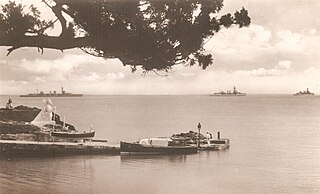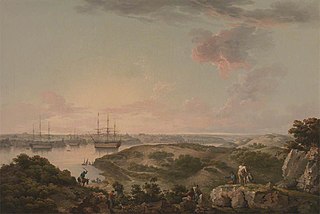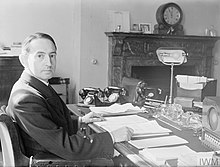
The post of Controller of the Navy was originally created in 1859 when the Surveyor of the Navy's title changed to Controller of the Navy. In 1869 the controller's office was abolished and its duties were assumed by that of the Third Naval Lord whose title then changed to Third Naval Lord and Controller of the Navy. In 1904 the title was changed again to Third Sea Lord and Controller of the Navy. In 1965 the office of the Third Sea Lord was abolished. The post-holder is responsible for procurement and matériel in the British Royal Navy.

The North America and West Indies Station was a formation or command of the United Kingdom's Royal Navy stationed in North American waters from 1745 to 1956, with main bases at the Imperial fortresses of Bermuda and Halifax, Nova Scotia. The North American Station absorbed the separate Newfoundland Station in 1825, and the Jamaica Station in 1830, to form the North America and West Indies Station. It was briefly abolished in 1907 before being restored in 1915. It was renamed the America and West Indies Station in 1926, absorbing what had been the South East Coast of America Station and the Pacific Station. It was commanded by Commanders-in-Chief whose titles changed with the changing of the formation's name, eventually by the Commander-in-Chief, America and West Indies Station.
This article presents a timeline of events in the history of the United Kingdom from 1700 AD until 1799 AD. For a narrative explaining the overall developments, see the related history of the British Isles.

The Parliamentary and Financial Secretary to the Admiralty also known as the Parliamentary and Financial Secretary to the Board of Admiralty was a position on the Board of Admiralty and a civil officer of the British Royal Navy. It was usually filled by a Member of Parliament. Although he attended Board of Admiralty meetings informally he was not made a full member of that Board until 1929. He served as the deputy to the First Lord of the Admiralty in Parliament and was mainly responsible for all naval finance and spending proposals from 1625 until 1959.

The Board of Admiralty (1628–1964) was established in 1628 when Charles I put the office of Lord High Admiral into commission. As that position was not always occupied, the purpose was to enable management of the day-to-day operational requirements of the Royal Navy; at that point administrative control of the navy was still the responsibility of the Navy Board, established in 1546. This system remained in place until 1832, when the Board of Admiralty became the sole authority charged with both administrative and operational control of the navy when the Navy Board was abolished. The term Admiralty has become synonymous with the command and control of the Royal Navy, partly personified in the Board of Admiralty and in the Admiralty buildings in London from where operations were in large part directed. It existed until 1964 when the office of First Lord of the Admiralty was finally abolished and the functions of the Lords Commissioners were transferred to the new Admiralty Board and the tri-service Defence Council of the United Kingdom.

The Commissioners for the Victualling of the Navy, often called the Victualling Commissioners or Victualling Board, was the body responsible under the Navy Board for victualling ships of the British Royal Navy. It oversaw the vast operation of providing naval personnel with enough food, drink and supplies to keep them fighting fit, sometimes for months at a time, in whatever part of the globe they might be stationed. It existed from 1683 until 1832 when its function was first replaced by the Department of the Comptroller of Victualling and Transport Services until 1869 then that office was also abolished and replaced by the Victualling Department.

The Surveyor of the Navy also known as Department of the Surveyor of the Navy and originally known as Surveyor and Rigger of the Navy was a former principal commissioner and member of both the Navy Board from the inauguration of that body in 1546 until its abolition in 1832 and then a member Board of Admiralty from 1848 to 1859. In 1860 the office was renamed Controller of The Navy until 1869 when the office was merged with that of the Third Naval Lord's the post holder held overall responsibility for the design of British warships.

The First Lord of the Admiralty, or formally the Office of the First Lord of the Admiralty, was the political head of the English and later British Royal Navy. He was the government's senior adviser on all naval affairs, responsible for the direction and control of the Admiralty, and also of general administration of the Naval Service of the Kingdom of England, Great Britain in the 18th century, and then the United Kingdom, including the Royal Navy, the Royal Marines, and other services. It was one of the earliest known permanent government posts. Apart from being the political head of the Naval Service the post holder was simultaneously the pre-eminent member of the Board of Admiralty. The office of First Lord of the Admiralty existed from 1628 until it was abolished when the Admiralty, Air Ministry, Ministry of Defence and War Office were all merged to form the new Ministry of Defence in 1964. Its modern-day equivalent is the Secretary of State for Defence.

The Glorious Revolution of 1688 rearranged the political map of Europe and led to a series of wars with France that lasted well over a century. This was the classic age of sail; while the ships themselves evolved in only minor ways, technique and tactics were honed to a high degree, and the battles of the Napoleonic Wars entailed feats that would have been impossible for the fleets of the 17th century. Because of parliamentary opposition, James II fled the country. The landing of William III and the Glorious Revolution itself was a gigantic effort involving 100 warships and 400 transports carrying 11,000 infantry and 4,000 horses. It was not opposed by the English or Scottish fleets.

The Department of the Accountant-General of the Navy also known as Accountant-General's Department was the department charged by the British Government with reviewing all naval estimates, conducting naval audits and processing payments from 1829 to 1932.

The Department of the Permanent Secretary also formally known as the Department of the Permanent Secretary to the Admiralty or the Department of the Secretary was the Civil Service department responsible for the control, direction and guidance of all administrative functions of the British Admiralty from 1702 to 1964, it was headed by the Permanent Secretary to the Admiralty.

The Civil Lord of the Admiralty formally known as the Office of the Civil Lord of Admiralty also referred to as the Department of the Civil Lord of the Admiralty was a member of the Board of Admiralty who was responsible for managing the Royal Navy's supporting civilian staff, the works and buildings departments and naval lands from 1830 to 1964.

The Comptroller of the Navy originally called the Clerk Comptroller of the Navy was originally a principal member of the English Navy Royal, and later the British Royal Navy, Navy Board. From 1512 until 1832, the Comptroller was mainly responsible for all British naval spending and directing the business of the Navy Board from 1660 as its chairman. The position was abolished in 1832 when the Navy Board was merged into the Board of Admiralty. The comptroller was based at the Navy Office.

The Controller of Storekeepers Accounts also known as the Comptroller of Storekeepers Accounts was a principal member of the Navy Board who was responsible for managing and processing all naval store-keeping accounts and deliveries to naval yards from 1671 to 1796 he was based in the Navy Office he superintended the Office for Examining Storekeepers Accounts.

The Western Squadron was a squadron or formation of the Royal Navy based at Plymouth Dockyard. It operated in waters of the English Channel, the Western Approaches, and the North Atlantic. It defended British trade sea lanes from 1650 to 1814 and 1831 to 1854. Following Admiralty orders to Lord Anson he was instructed to combine all existing commands in the English Channel - those at the Downs, Narrow Seas, Plymouth and the Spithead - under a centralized command under the Commander-in-Chief, Western Squadron in 1746. The squadron was commanded by the Flag Officer with the dual title of Commander-in-Chief, English Channel and Commander-in-Chief, Western Squadron

Port Mahon Dockyard was a Royal Navy Dockyard located at Port Mahon, Menorca, Spain. It was opened in 1708 and in 1802 the port was ceded back to Spain. However a resident commissioner of the Royal Navy was still appointed as late as 1814. The dockyard was administered by the Navy Board and was part of the Mediterranean Fleet.

The Storekeeper-General of the Navy was initially a senior appointment and principal commissioner of the British Navy Board created in 1829. In 1832 the navy board was abolished and this office holder then became a member of the Board of Admiralty until 1869, when his office was abolished and his responsibilities were assumed by the Third Naval Lord and Controller of the Navy.










